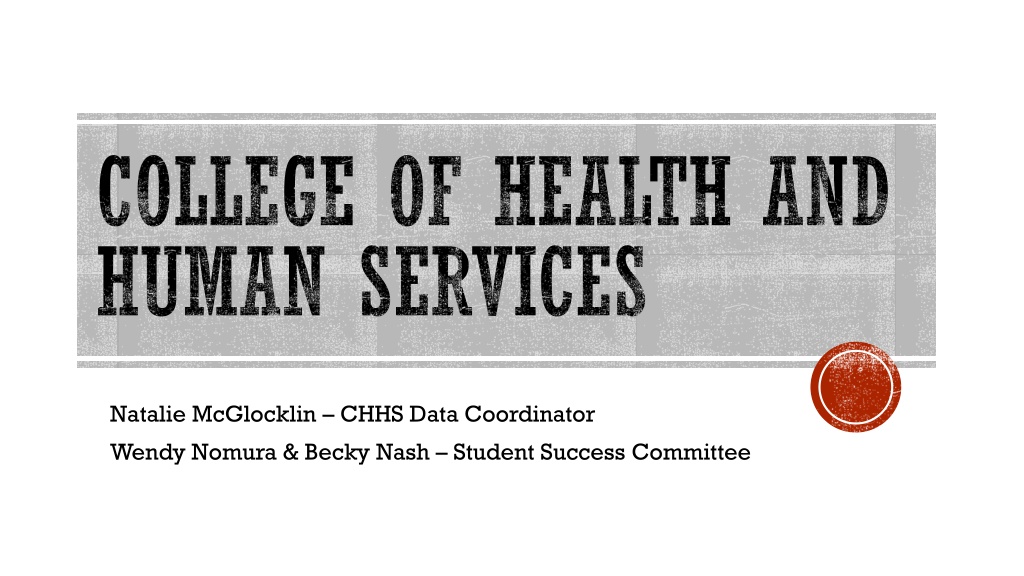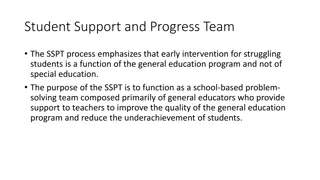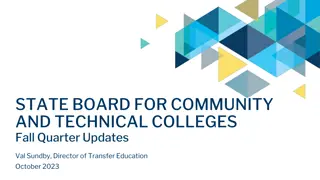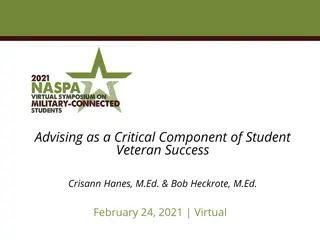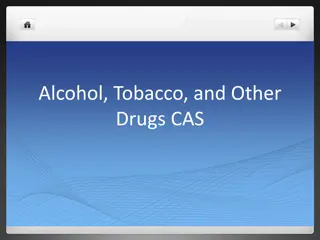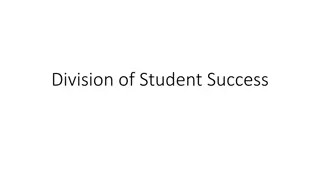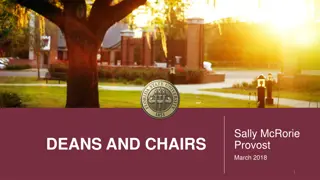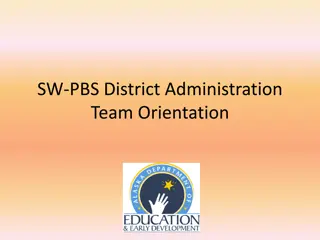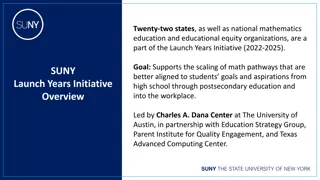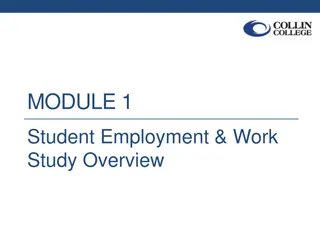Insights into Student Success Initiatives
Initiatives aiming to enhance student success & timely graduation in health and human services education. Analyze challenges, strategies, & student perspectives. Discover keys to nurturing successful pathways for pre-majors and declared majors.
Download Presentation

Please find below an Image/Link to download the presentation.
The content on the website is provided AS IS for your information and personal use only. It may not be sold, licensed, or shared on other websites without obtaining consent from the author.If you encounter any issues during the download, it is possible that the publisher has removed the file from their server.
You are allowed to download the files provided on this website for personal or commercial use, subject to the condition that they are used lawfully. All files are the property of their respective owners.
The content on the website is provided AS IS for your information and personal use only. It may not be sold, licensed, or shared on other websites without obtaining consent from the author.
E N D
Presentation Transcript
COLLEGE OF HEALTH AND HUMAN SERVICES Natalie McGlocklin CHHS Data Coordinator Wendy Nomura & Becky Nash Student Success Committee
GOALS FOR DATA FELLOWS & CHHS Remove barriers to timely graduation for students To understand the synergies in our curriculum across departments and colleges so that we may be able to: Help students navigate the many degree options Find ways to mitigate the negative effects of major switching Increase 4-year graduation rates Be realistic about what we can and cannot control as a college
THE ANXIETY OF THE 4-YEAR GRAD INITIATIVE Unknown to Department Course Choice = Wild Wild West Department = No Control Readiness Varies Known to Department Controlled Curriculum Pre Major Declared Major Admitted Underlying Factors: impaction, forced declaration, major readiness, clear major options, maturity, career choices, accreditation, the pre-major experience, local preference
STUDENT SUCCESS SURVEY UNDERSTANDING THE DIFFERENT NEEDS FOR MAJORS VS. PRE-MAJORS Pre-majors were more likely to report failing a course and heavy course load as barriers. Declared majors needed more advising on graduate school, where pre-majors wanted more major course selection advising and GE advising. Pre-majors (33.1%) were less likely than declared majors (42.7%) to plan to use summer school Difference in the number of units taken with 46.5% of pre-majors and 32.0% of majors typically taking 15 or more units per semester Pre-majors were more likely to feel isolated and less likely to feel supported by a network of students, that their program helped meet their career goals, that their job and family interfered with school, and that their family fully supported their academic aspiration than declared majors.
WHO ARE OUR PRE- NURSES AND WHERE DO THEY GO?
INTERVIEW WITH A REAL STUDENT FROM NURSING HEALTH SCIENCE Biggest Challenges Things That Helped The notice for acceptance/non- acceptance for NRSG was late (between Fall and Spring semesters) They had already taken NUTR 132 & this allowed them to declare the HSC major immediately after notification of non-acceptance to NRSG Had misconceptions about transferring to another CSU, and differing prerequisites made it impossible Friends who didn t take NUTR 132 had trouble getting into some pre- HSC courses Did not receive good advice on how to transfer, such as which majors lined up best Did have a clear idea that they might not get into the Nursing program from the beginning
THINGS WE CANT CONTROL CSULB Declares Impaction
BEING REALISTIC CSULB FTF About 70-80 students total are accepted into the Nursing undergraduate program every semester NRSG Pool CC Transfers 70 400-600 Total Applications Between 2005-2012, on average 15-20% of students who enter CSULB as Pre-Nursing are accepted into the program about 30-45 students per Fall Cohort
SO WHAT ABOUT THE OTHER 80%? CSU Student Success Dashboard Degrees Awarded to Pre-Nurses (Annotated List) 2011-2013 44 72 More students went on to receive a degree in Health Care Administration or Health Science than were accepted and persisted in the Nursing Program 113 69 FCS Child Dev Family Stds BA Health Care Administration BS Health Science BS Nursing Basic BS
BUT WE ARE NOT IN THE DREAM CRUSHING BUSINESS So how can we help students navigate a change in direction without chastising them, while being realistic, but while being mindful of their individual needs, wants, barriers, and personal strengths?
PERSISTENCE AND ATTRITION WITHIN UNIVERSITY PRE-NRSG VS. CHHS
GRADUATION RATES WITHIN UNIVERSITY
COMPARE MSDR NURSING & HEALTH SCIENCE ALTERNATIVE PATHWAYS Health Science Semester After First Semester Requirement STAT 108 or 118 CHEM 140 BIOL 207 BIOL 208 HSC 210 NUTR 132 or RSCH 207 Nursing Basic Semester By Second Semester Requirement STAT 108 or 118 CHEM 140 BIOL 201 BIOL 207 BIOL 208 By Fourth Semester Health Care Administration Semester After First Semester Requirement STAT 108 or 118 BIOL 207 BIOL 208 ACCT 201 ECON 101 or 300 MATH 115
TIME TO DEGREE Higher 4-YR Grad Rates than overall for CHHS within University!
COMMUNICATION 101: MEET THEM WHERE THEY LIVE Who is responsible for pre-majors? The CHHS Advising Center currently has a 1:1000 advisor to student ratio The School of Nursing is not permitted to advise pre-nursing students How can we intervene effectively? SOAR Freshman Advising Social Media Brochures/flyers Faculty Advisors Creating a non-punitive culture or conversation around major switching
